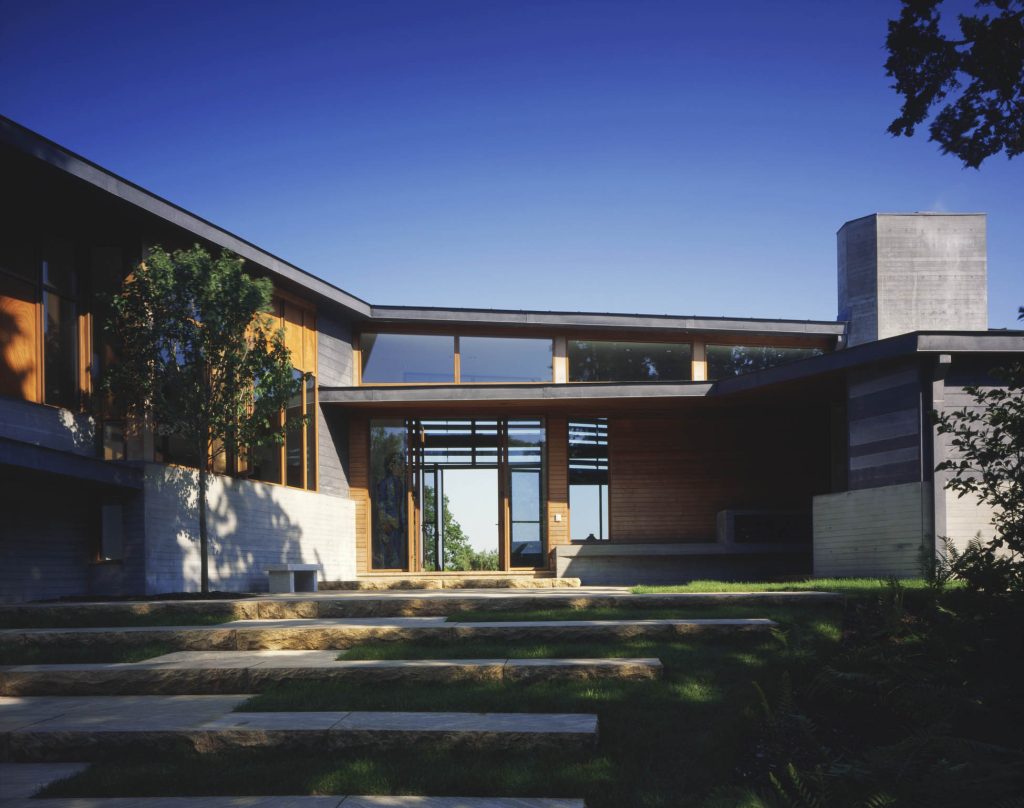
Sturdy construction leads to challenging WiFi environments. Get better signal strength and WiFi performance with our guide.
WiFi Signal Obstacles in Homes
As for what causes a reduction in signal strength, there are a few main factors. First is the distance between the router and the device – WiFi radio signals dissipate over range due to the effects of the atmosphere and natural signal degradation over distance. Second are the signal propagation path obstructions, such as brick or concrete walls. Most objects cause some loss in signal strength, especially metal objects, but walls have the most significant impact. The number of walls will impact WiFi signal strength, as well the wall material and thickness.

Tip: Don’t hide your Router in a closet!
Walls made of less dense materials such as wood and plaster will have less impact on WiFi signal strength, although there will still be diminished signals. Solid furniture and other household objects can also interfere with a WiFi signal, so it’s a good idea to position your router in an open space like on a shelf or side table wherever possible. This will also help with cooling, improving device life.
Exploring Solutions for Improved WiFi Coverage
Adjusting the router’s positioning or using higher gain antennas can help, but an even better idea is to work around the issue. Wireless access points, mesh systems, extenders, and powerline adapters are all viable options, depending on your home’s layout and the number of devices you want to connect. Knowing how to improve WiFi signals through thick walls can be the first step for improving your home internet experience, so let’s explore some WiFi coverage solutions.
Option 1: Relocating Your Router
If possible, relocate your router to a central, open area. A router at the far corner of your home may not have the signal strength to reach rooms on the other side, ultimately leading to WiFi dead zones. If yours is a smaller home or apartment, this simple router position adjustment may be all that is required to establish a reliable internet connection. You can also try elevating your router so objects like tables and chairs aren’t affecting the WiFi signal line of sight.
Option 2: Using Range Extenders or Repeaters
Range extenders (repeaters) have traditionally been a way to alleviate WiFi coverage problems. A range extender should be placed midway between your router and the device you want to connect. The extender will rebroadcast the WiFi signal, although there will be some significant bandwidth loss. Position the WiFi extender close enough to the router and device for the extender WiFi signal to overlap. Range extenders can be a good solution in smaller homes and apartments with few connected devices. A newer type of “Extender” is using a multi-unit Mesh WiFi system. This will be discussed in depth in Option 4 below.
Option 3: Utilizing Powerline Adapters
A powerline adapter uses existing electrical wiring to deliver an internet connection. An Ethernet cable is run from the powerline (power socket) adapter to a WiFi network device such as a computer or smart TV. This can be a viable alternative to running Ethernet cables through the walls or roof cavity. However, powerline adapters can suffer interference from other WiFi devices, and performance is limited as powerline adapters mostly run on the older WiFi 5 standard. WiFi technology has progressed dramatically, and the best performance today is found with WiFi 7 or WiFi 6/6E.
Option 4 (Best): Mesh WiFi for Thick Walls
By far the best option for making thick walls disappear is by upgrading your WiFi Router to a multi-unit Mesh WiFi system. Mesh WiFi Systems have emerged as the easiest and most effective ways to cover an entire home with powerful WiFi. Mesh WiFi uses a powerful Mesh Router and 1-5 Mesh Satellites to spread WiFi throughout a home. The Mesh WiFi solution is similar to WiFi Extenders, but critical difference is that each satellite specially tuned to the specialized router to create a seamless network, better penetrating walls and other WiFi obstacles. We explore the Mesh WiFi solution in-depth below.
Extreme Measures: Open Plan Living
Open-plan living is a home trend that is here to stay. This type of home, without many thick walls, is friendlier to WiFi signals. You will notice more reliable WiFi coverage from your WiFi router. However, the distance the WiFi signal needs to travel to reach your devices will still be an issue in larger homes. The further you move away from your router, the weaker the signal will become.

The Mesh WiFi Advantage: Blanket Coverage and Seamless Networking
WiFi mesh systems, first introduced in 2015, are a game changer for home networks. They offer whole-home blanket WiFi coverage and seamless networking upstairs and downstairs, from the front door to the back garden. Orbi 970 WiFi 7, introduced in 2023, is the best mesh WiFi for thick walls.
How Mesh WiFi Works
Rather than relying on a single router, mesh networks use multiple routers (satellites) to distribute the wireless signal uniformly over a larger area. In mesh systems, the main router connects to the internet via a modem, and the satellites connect in a daisy-chain fashion to the router. The satellites “talk” to one another and behave the same way as the main router, allowing you to extend the WiFi signal to every room of your home.
WiFi dead spots are a thing of the past and you will experience greater WiFi coverage, faster speeds,
and better WiFi connections. To extend the WiFi range further, simply add another satellite to your home WiFi mesh system. The best mesh for thick walls allows you to roam freely around your home with your devices with seamless wireless connectivity. NETGEAR Orbi whole-home WiFi mesh systems are a breeze to set up and configure using the handy Orbi App.
Orbi Mesh Ethernet Backhaul Option:
In addition to Orbi’s WiFi Backhaul – Orbi satellites can optionally communicate directly using their included 2.5Gb Multi-Gig Ethernet ports. If your home is already wired for Ethernet this can be a powerful and flexible option. Your Orbi network can even use a combination of Wired and Wireless backhaul. For more on this use case learn about Orbi 970’s Enhanced Dedicated Backhaul.

Benefits of NETGEAR Orbi Mesh WiFi Systems
The latest NETGEAR Orbi quad-band and tri-band WiFi mesh WiFi systems take you on a quantum leap into the future of networking. NETGEAR Orbi 970 WiFi 7 is considered by many to be the best mesh WiFi system on the planet, with benefits that include:
- Ability to create a home network, guest network, and smart home IoT network.
- A reliable WiFi signal to every nook and corner of the home, even outdoors in the yard.
- Streamlined and seamless connections without the need for range extenders.
- A consistently strong signal for up to 200 connected devices running simultaneously.
- Convenient scalability to suit your specific wireless network needs.
- Robust NETGEAR Armor WPA3 encrypted security for whole-home network protection.
- Easy setup and network management using the Orbi App.
- Wired Ethernet port backhaul connection options for dedicated devices.
- Conveniently run speed tests, configure satellite placement, and optimize device connections.
- Use a single password for your entire network, without manual switching or reconnecting.
- The option to apply Smart Parental Controls to ensure everyone in your network is safe online.
NETGEAR: The Leader in Mesh WiFi for Thick-Walled Homes
Instead of trying to pass the WiFi signal through thick walls, WiFi mesh takes the easier route around the walls. NETGEAR Orbi mesh systems are the best WiFi solution for homes with thick walls, delivering multi-gigabit WiFi speeds up to 27Gbps and coverage up to 10,000 sq. ft. The latest firmware is updated automatically to ensure your system always performs optimally. The main router and router satellites contain multiple Ethernet ports for priority HD streaming, multi-player gaming, conferencing, virtual reality, and remote work from any room in your home. As a world WiFi leader since the 1990s, NETGEAR has the solutions for connectivity issues.
Transform Your Online Experience
If you are struggling to breach thick walls with an older WiFi 5 router operating on the 2.4GHz and 5GHz bandwidths, it’s probably time to upgrade to the best mesh for thick walls, NETGEAR Orbi WiFi 7. This game-changing system includes the new 6GHz bandwidth with enhanced dedicated backhaul. There are loads more Orbi Mesh WiFi 7 features to explore that deliver improved connectivity for next-generation networking. Experience the future of WiFi with NETGEAR Orbi Mesh Systems and transform your online experience.
Suggested NETGEAR links and products
A strong WiFi signal is essential for a satisfactory online experience. Mesh WiFi for large homes is now a reality, and here are just a few NETGEAR Orbi WiFi 7 and WiFi 6 mesh router systems worth checking out.










